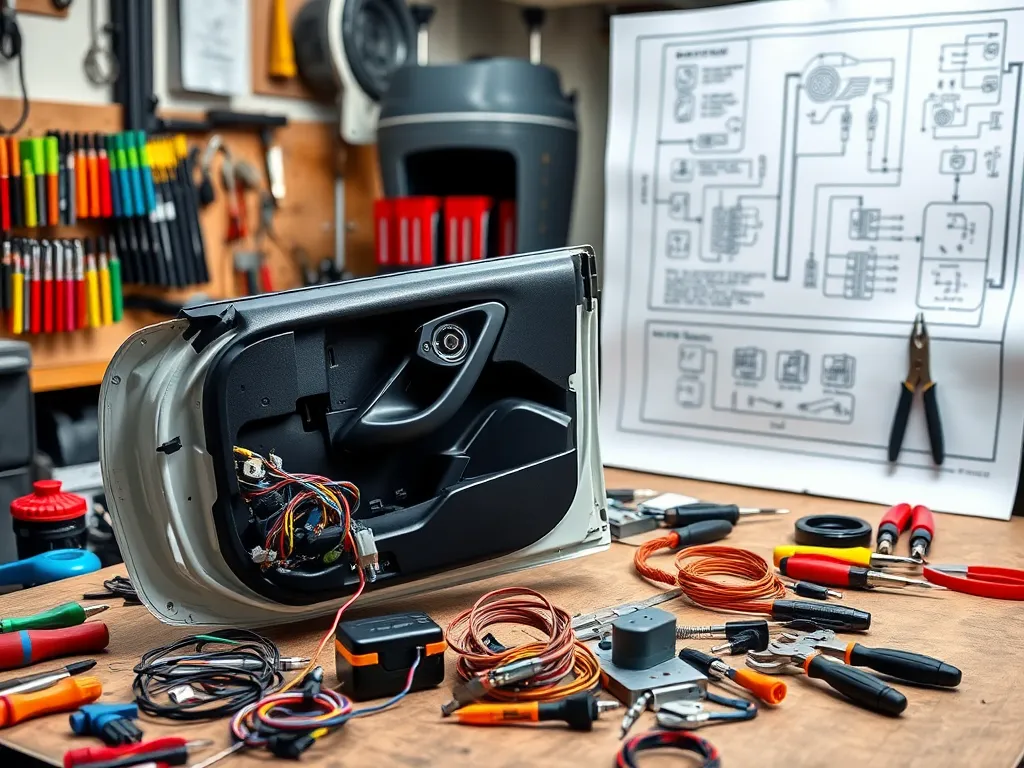Expert Guide to Automatic Car Door Lock Installation

Automatic Car Door Lock Installation: A Comprehensive Guide
Automatic Car Door Lock Installation is a significant upgrade for vehicle owners seeking enhanced security and convenience. This system allows car doors to lock automatically once the vehicle is in motion or when the key fob is out of range, providing peace of mind for drivers and passengers alike. In this article, we will delve into the benefits, types of systems available, the installation process, maintenance tips, and cost factors associated with automatic car door lock installation.
When it comes to Automatic Car Door Lock Installation, many people are unaware of the various types of systems available on the market. These range from simple aftermarket kits to more complex OEM solutions. The scope of installation can vary depending on the type of lock system chosen, but the main goal remains the same: to provide an added layer of security and convenience. This function can also be integrated with existing vehicle security systems for greater efficacy.
The advantages of installing automatic car door locks extend beyond mere convenience. Benefits include increased vehicle security, as automatic locking mechanisms deter break-ins. Furthermore, these systems often come with remote locking features, allowing users to lock or unlock their doors from a distance, which is particularly beneficial when carrying groceries or children. This guide will cover all essential aspects of the installation process and ongoing maintenance to ensure the system operates optimally for years to come.
Upgrade your vehicle with an automatic car door lock for added security.
Safety is another critical aspect of Automatic Car Door Lock Installation. Many modern systems are designed with advanced safety features, such as automatic deadbolts and integration with alarm systems that alert the owner in case of attempted unauthorized access. With the growing concern for vehicle security, investing in an automatic door lock system can be a prudent decision for many drivers.
In summary, Automatic Car Door Lock Installation provides numerous benefits, including improved security, convenience, and safety features. Understanding the various types of systems, the intricacies of installation, and the importance of ongoing maintenance can empower vehicle owners to make informed decisions regarding their security upgrades.
For a professional car door lock installed, trust Amit Keys & Remotes.
Benefits of Automatic Door Locks
One of the most significant benefits of automatic door locks is the increased security they offer. With these systems, your vehicle will automatically lock once you start driving or after you step away from it, ensuring that your doors are always secured and reducing the risk of theft.
The convenience of remote locking cannot be overstated. With a simple press of a button on your key fob, you can lock or unlock your car from a distance, saving time and effort, particularly in crowded parking lots or when your hands are full.
Amit Keys & Remotes offers expert car lock installation services.
Enhanced safety features are built into many automatic door lock systems. Features like auto-lock and safety sensors, which prevent doors from locking when a key or fob is inside, ensure the protection of your passengers, especially children.
Integration with alarm systems is another notable benefit, providing an extra layer of security. Many automatic door locks can synchronize with existing alarm systems, alerting owners of unauthorized entry or tampering.
Automatic door locks also reduce the wear and tear on manual locks, prolonging their lifespan. By minimizing the need to use a physical key repeatedly, these systems place less strain on the locking mechanism itself.
Types of Automatic Door Lock Systems
Central locking systems are one of the most traditional types of automatic door locks. They allow the driver to lock or unlock all doors simultaneously from a single point, either from the interior of the vehicle or with a remote key fob.
Keyless entry systems have gained popularity in recent years. These systems allow for locking and unlocking without a physical key, using remote fobs or even smartphone apps to initiate access to the vehicle.
Smart lock options are at the forefront of security technology. These locks often feature advanced connectivity options, such as Bluetooth or Wi-Fi, allowing users to control their door locks from their smartphones and integrate them with other smart home devices.
Aftermarket kits are available for those looking to retrofit their vehicles with automatic door locks. These kits typically include everything needed for installation and can be a more affordable option compared to OEM systems, although they may require more technical knowledge for installation.
When considering automatic door lock systems, it's essential to weigh OEM (Original Equipment Manufacturer) systems against aftermarket options. OEM systems may offer better compatibility and integration with existing vehicle technology, while aftermarket options provide flexibility and cost savings.
Installation Process Overview
Gathering necessary tools is the first step in the installation process. Common tools needed include screwdrivers, wrenches, wire strippers, and electrical tape, depending on the system chosen. Having these tools on hand can streamline the installation process.
Wiring and electrical connections are crucial steps in the installation. It’s vital to connect the system properly to avoid any electrical issues. Following the manufacturer’s instructions or seeking professional help is advisable if you're not experienced in wiring.
Mounting the lock mechanism involves physically installing the lock actuator in the door. This may require removing door panels and carefully securing the new lock system within the existing door architecture.
Testing the system is essential to ensure proper functionality after installation. Check the operation of all doors, remote locking features, and integration with alarm systems to verify everything works seamlessly.
Troubleshooting common issues might be necessary after installation. Problems such as unresponsive locks or inconsistent operation can often be addressed through simple adjustments or re-checking wiring connections.
Maintenance and Care
Regular inspection of locking mechanisms is crucial to ensure long-term functionality. Checking for signs of wear and tear, such as stuck locks or unusual noises, can help address issues before they become significant problems.
Cleaning and lubricating the locks should be part of regular maintenance. Dust and debris can affect the performance of automatic door locks; periodic cleaning can prevent build-up and ensure smooth operation.
Replacing batteries in key fobs is another vital maintenance task, as low battery levels can affect remote locking functionality. Regularly checking and replacing these batteries will help maintain optimal performance.
Addressing malfunctioning locks promptly can prevent more costly repairs down the line. If you notice that locks are not responding correctly or are making strange sounds, consult the installation manual or a professional for advice.
Lastly, checking compatibility with existing systems is essential for maintenance. Ensuring that new software updates or changes in your vehicle's electronic systems do not affect the automatic door locks can help avoid functionality issues.
Cost Factors for Installation
The price of automatic lock systems can vary widely depending on the type and brand chosen. Basic aftermarket kits can start at a lower price point, while advanced smart lock systems can be significantly more expensive due to their features.
Labor costs for professional installation can add to the overall expense. If you are not comfortable with DIY installation, hiring a professional can ensure the system is installed correctly but will come with labor charges.
DIY installation can lead to significant savings, but it requires a level of technical skill. If you feel confident in your ability to follow installation instructions, this can be a cost-effective option.
Potential upgrades and features can also impact the overall installation cost. Higher-end systems with more advanced features often come with a higher price tag, so consider your essential needs versus optional features.
Lastly, budgeting for additional accessories, such as extra key fobs or upgraded alarm systems, can help you prepare for the total cost involved in installing automatic car door locks.
